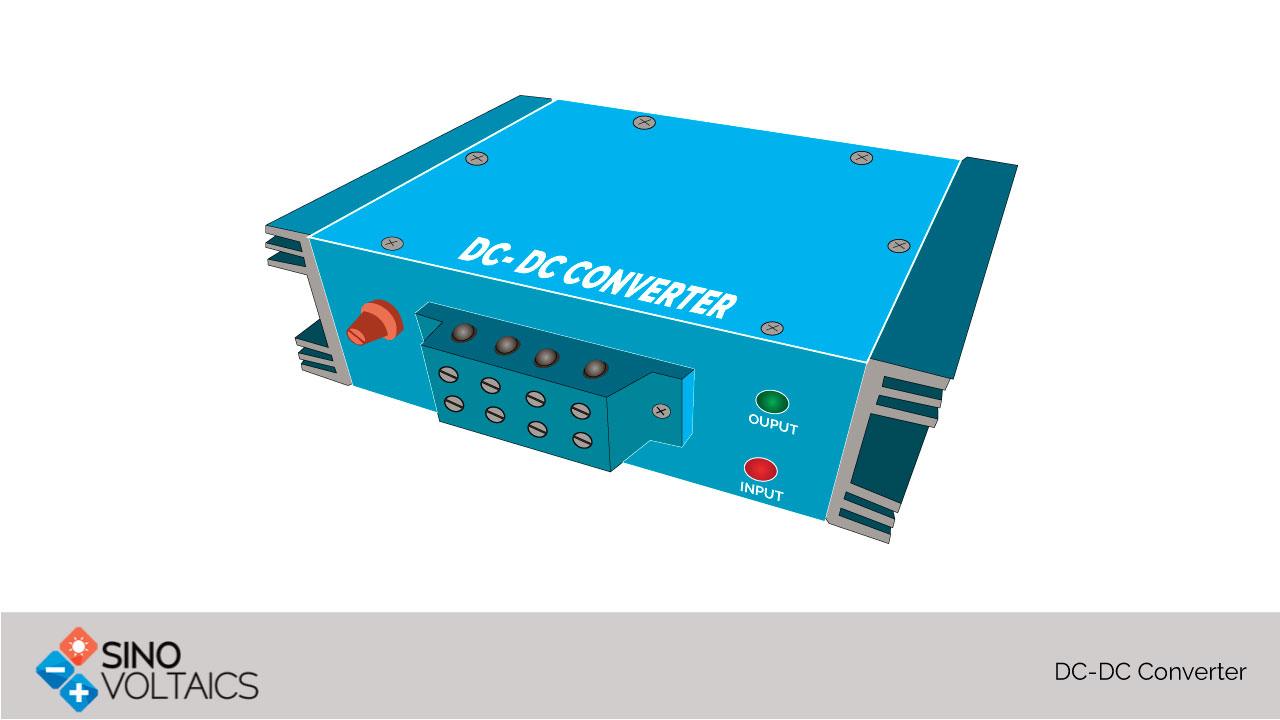DC-DC Converters
DC- DC converters are what their name says. They convert DC at one voltage to DC at another voltage without using a conventional transformer. Learn more about DC ( Direct Current) here https://sinovoltaics.com/learning-center/basics/direct-current-dc-power-definition-and-applications/. In this process they can provide voltage regulation and current limiting also. Imagine a control mechanism draining a packet of charge from the input DC source, and then pouring it into an output reservoir (capacitor) from which charge is being drained by a load. Output voltage level can be controlled through either the frequency of packet transfer (pulse frequency modulation) or the amount of charge per packet (pulse width modulation).  The capacitor ensures a more or less constant (ripple free) voltage level which could be higher than the input voltage (boost), or lower (buck) converter. Since the pulse frequency is in many kilohertz we can use small capacitor. The ‘packet’ is normally captured in an inductor in the form of a magnetic field. The inductor size can also be small because of the high frequency. Find out more here: https://www.rohm.com/electronics-basics/dc-dc-converters/what-is-dc-dc-converter The picture can now be restated. An inductor is allowed to charge (draw and build up current) from the input DC source, by an electronic switch (normally FET, in preference to BJTs). The switch is operated by very short pulses at many kilohertz. When the switch is toggled, the stored energy is coupled to the output. Because of lens’s law the output voltage can be higher than the input voltage. Components: Essential components of a DC-DC converter are a processor/ controller; a single inductor, or in some configurations two coupled inductors (but not exactly a transformer which is used in AC); a semiconductor switch; and a filter capacitor, in addition to other minor components. No transformer is used. Because of the high frequency small inductors and capacitors can be used, and hence, DC-DC converters are light weight. They are more efficient in comparison to linear regulators. DC-DC converters have wide application. Most portable electronic equipment will use DC-DC conversion to obtain its working voltages. In the context of solar energy, the charge controller is a DC-DC converter. The MPPT stage in the inverter is also a DC to DC converter. There is a trend to apply MPPT to the panel and then string the outputs for a single inverter per string. Those mini MPPT systems will also be basically dc-dc converters.
The capacitor ensures a more or less constant (ripple free) voltage level which could be higher than the input voltage (boost), or lower (buck) converter. Since the pulse frequency is in many kilohertz we can use small capacitor. The ‘packet’ is normally captured in an inductor in the form of a magnetic field. The inductor size can also be small because of the high frequency. Find out more here: https://www.rohm.com/electronics-basics/dc-dc-converters/what-is-dc-dc-converter The picture can now be restated. An inductor is allowed to charge (draw and build up current) from the input DC source, by an electronic switch (normally FET, in preference to BJTs). The switch is operated by very short pulses at many kilohertz. When the switch is toggled, the stored energy is coupled to the output. Because of lens’s law the output voltage can be higher than the input voltage. Components: Essential components of a DC-DC converter are a processor/ controller; a single inductor, or in some configurations two coupled inductors (but not exactly a transformer which is used in AC); a semiconductor switch; and a filter capacitor, in addition to other minor components. No transformer is used. Because of the high frequency small inductors and capacitors can be used, and hence, DC-DC converters are light weight. They are more efficient in comparison to linear regulators. DC-DC converters have wide application. Most portable electronic equipment will use DC-DC conversion to obtain its working voltages. In the context of solar energy, the charge controller is a DC-DC converter. The MPPT stage in the inverter is also a DC to DC converter. There is a trend to apply MPPT to the panel and then string the outputs for a single inverter per string. Those mini MPPT systems will also be basically dc-dc converters.
